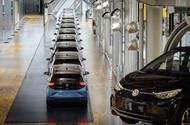Why Did Volkswagen Group’s Profits Drop So Sharply in Early 2025?
If you’ve been following the auto industry, you probably noticed the headlines: Volkswagen Group’s profits took a 29% nosedive in the first half of 2025. That’s a big swing for one of the world’s largest carmakers. But what’s really behind those numbers? Let’s break it down in plain English.
How Did US Tariffs Impact Volkswagen’s Bottom Line?
One of the biggest hits came from across the Atlantic. US import tariffs cost Volkswagen Group a staggering €1.3 billion in just the second quarter of 2025. To put that in perspective, that’s about £1.13 billion gone—just like that. CEO Oliver Blume made it clear: the company can’t count on these tariffs being a short-term headache. They’re planning for the long haul.
What does this mean for the company’s financial health? Without those tariffs and the costs of restructuring, VW’s operating margin would have been a healthy 5.6%. Instead, it landed at 4.2%. In the second quarter alone, the margin dropped from 6.8% to 4.7%. That’s a significant squeeze, especially in an industry where every percentage point counts.
Are Cost-Cutting Measures Making a Difference?
Volkswagen isn’t just sitting back and taking the hit. The company has rolled out aggressive cost-cutting plans. Since December, about 4,000 employees have left, with another 20,000 set to depart under existing agreements. The goal? Trim €4 billion (£3.5 billion) in costs every year—just at Volkswagen itself.
But it doesn’t stop there. Audi is planning to reduce its headcount by around 7,500 people by 2029, and Porsche will cut about 3,900 jobs in the same period. These aren’t easy decisions, but they’re part of a broader strategy to keep the company competitive in a rapidly changing market.
Why Are Electric Cars Hurting Volkswagen’s Margins?
Here’s an interesting twist: even as Volkswagen sells more electric vehicles (EVs), it’s making less money on each one. Battery-electric vehicles (BEVs) are expensive to produce, and their profit margins are slimmer than those of traditional cars. In Europe, BEV sales shot up 47% year-on-year, now making up one in five VW Group sales. Globally, BEVs account for 11% of total sales.
Order intake for BEVs in Europe jumped 62% in the same period, signaling strong demand. But for now, that demand is a double-edged sword. The more EVs Volkswagen sells, the more its overall margins get squeezed. It’s a classic case of short-term pain for (hopefully) long-term gain.
Which Brands Are Driving Growth—and Which Are Struggling?
Volkswagen Group isn’t just one brand—it’s a family of them. So, how did each fare?
– Core brands (Volkswagen, VW Commercial Vehicles, Skoda, Seat, Cupra): Sales rose 1% year-on-year.
– Volkswagen itself: Sales were flat at just over 1.5 million units.
– Skoda: Up 6%, reaching 582,000 units.
– Progressive brands (Audi, Lamborghini, Bentley, Ducati): Sales climbed 7% to 574,000 units.
– Porsche: Sales fell 11% to 135,000 units.
Overall, global deliveries nudged up 1% to 4.4 million units, thanks mainly to growth in Europe and South America. The US was a different story: sales dropped 7% in the first half of 2025, and a sharper 16% in the second quarter as tariffs took their toll.
What’s Happening in China—and Why Does It Matter?
China remains a crucial market for Volkswagen, but it’s not all smooth sailing. Sales dipped 2% in the first half of 2025. However, CEO Blume is optimistic. The company’s new “in China, for China” strategy is all about developing models tailored specifically for Chinese consumers. This approach is expected to bear fruit by the end of the year, when a new wave of VW Group “NEVs” (new energy vehicles) starts hitting showrooms.
By 2027, Volkswagen plans to launch 30 NEV models in China, with 50 on the roadmap by the end of the decade. To stay competitive with local manufacturers, VW has reworked its compact, China-only BEV platform, slashing costs by 40%. That’s a bold move, aiming to make these vehicles cost-competitive in the world’s largest auto market.
What Can We Learn from Volkswagen’s Current Challenges?
Volkswagen’s recent financial results are a snapshot of an industry in flux. Tariffs, shifting consumer preferences, and the massive investment needed for electrification are all reshaping the landscape. While the short-term numbers might look rough, the company is betting big on a leaner workforce, smarter cost structures, and a future where electric cars are the norm—not the exception.
It’s not rocket science, but it is a balancing act. Volkswagen is navigating the tricky transition from combustion engines to electric power, all while dealing with global trade tensions and fierce competition. The outcome? It could be game-changing—not just for Volkswagen, but for the entire auto industry. If you’re watching this space, expect more twists and turns as the story unfolds.

